In the previous article on dynamic library encapsulation examples, a CH347 high-speed USB to UART, SPI, I2C, JTAG bridging module was used, which is now open source 👉 GitHub Repository[1].
Introduction
CH347 USB High Speed Bridge is a debugging tool designed based on the CH347[2] chip, supporting high-speed USB, allowing USB to UART, USB to SPI, USB to I2C, USB JTAG, and USB to GPIO functionalities.
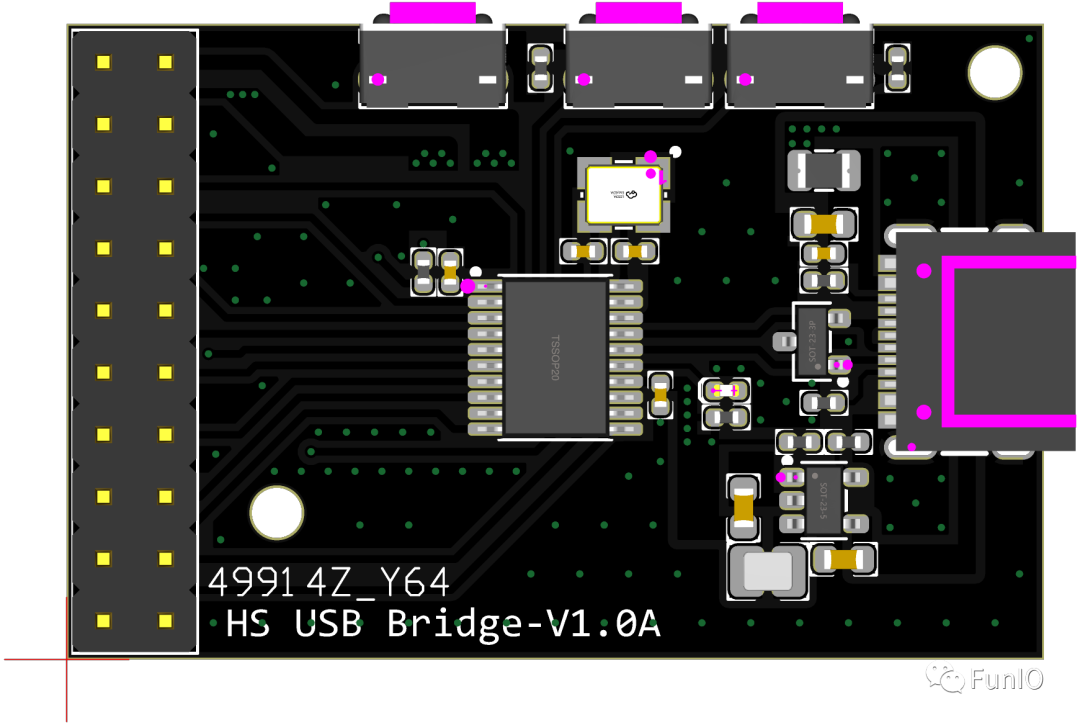
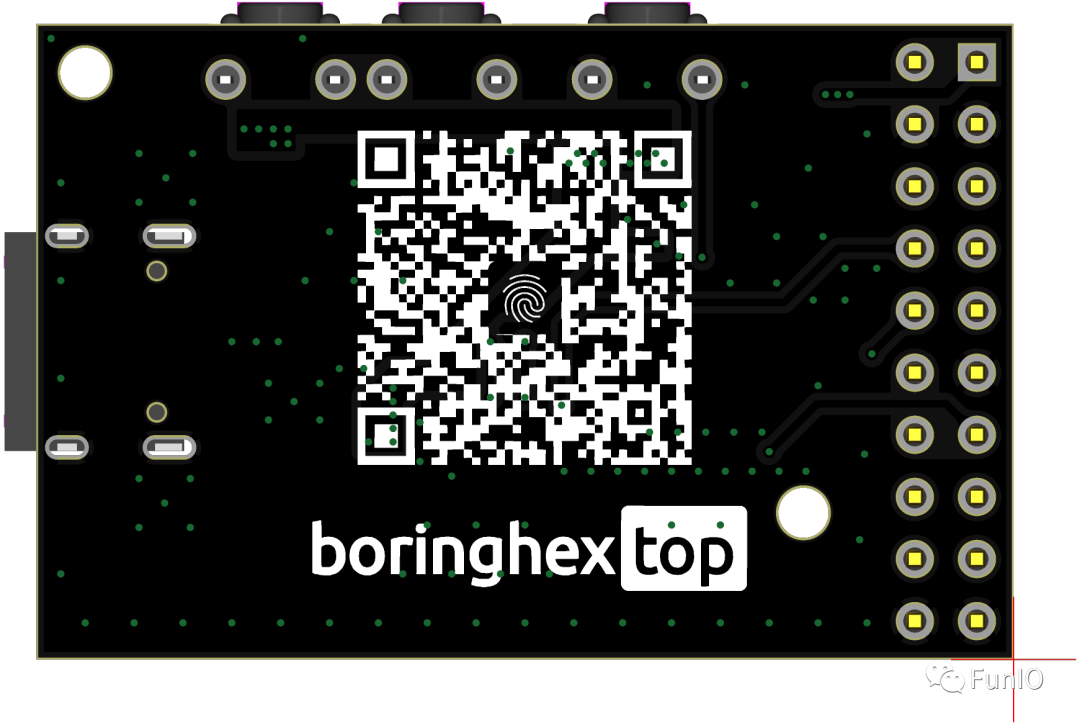
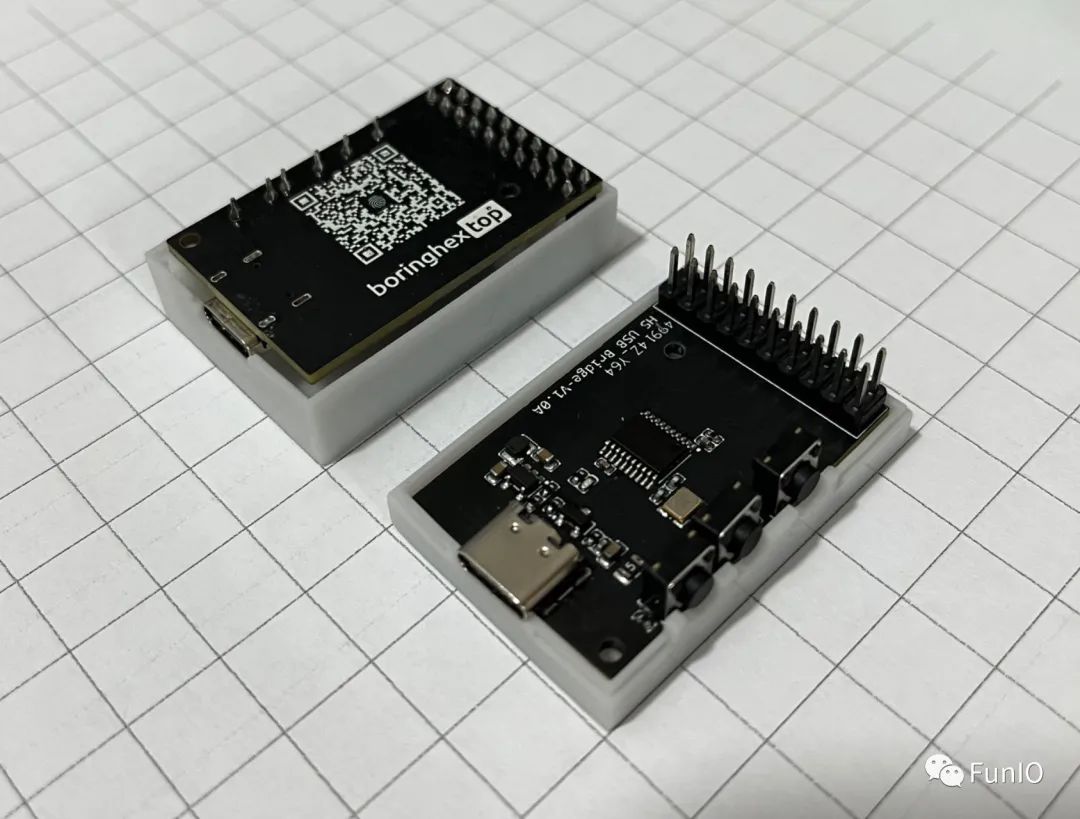
Features
Overview
-
Type-C interface, USB2.0, supports 480Mbps high-speed mode -
Button to switch work modes, supports hot swapping, no need to unplug USB -
Built-in EEPROM, configurable working mode, chip VID, PID, maximum current value, vendor and product information strings, etc. -
Onboard high-efficiency DCDC, supports 5V, 3.3V power output, maximum 1A current, with short circuit protection -
Compact size, space-saving, easy to use
UART
-
Built-in firmware simulates standard serial port for upgrading original serial peripheral devices, or adding additional serial ports via USB -
Serial applications on Windows operating system are fully compatible without modification -
Hardware full-duplex serial port, with independent transmit and receive buffers, supporting baud rates from 1200bps to 9Mbps -
Serial port supports 8 data bits, odd, even, or no parity, and 1 or 2 stop bits -
Each serial port has a built-in 12K byte receive FIFO and 4K byte transmit FIFO -
Supports common MODEM control signals RTS, DTR, DCD, RI, DSR, CTS -
Supports CTS and RTS hardware automatic flow control -
Supports half-duplex, provides serial port sending status indication TNOW, can be used to control RS485 transmit-receive switching -
Supports RS232, RS485, RS422 interfaces through external level conversion devices
SPI
-
Host/Master mode -
Provides SCS line, SCK/CLK line, MISO/SDI/DIN line, MOSI/SDO/DOUT four signal lines -
Supports 2 chip select signal lines, can operate 2 SPI interface devices in time division -
Supports 8-bit/16-bit data structure, supports MSB and LSB transmission -
Supports SPI modes 0/1/2/3, supports transmission frequency configuration, transmission frequency can reach 60MHz -
Supports hardware DMA for sending and receiving -
Can flexibly operate 4-wire interface FLASH, MCU, sensors, etc., using computer API
I2C
-
Host/Master mode -
Provides SCL and SDA signal lines, supports 4 transmission speeds -
Can flexibly operate 2-wire interface A/D, D/A, EEPROM, and sensor devices using computer API
JTAG
-
Host/Master mode -
Provides TMS line, TCK line, TDI line, TDO line, and TRST line (optional) -
Supports high-speed USB data transmission -
Can flexibly operate CPU, DSP, FPGA, CPLD, MCU devices using computer API
GPIO
-
Supports up to 8 GPIO input/output functionalities
Working Modes
K1 and K2 pressed output low level, released output high level. The table below ‘0’ indicates pressed, ‘1’ indicates released.
| K1 | K2 | Mode | Interface Function |
|---|---|---|---|
| 1 | 1 | 0 | UART0 + UART1 |
| 0 | 1 | 1 | UART1 + SPI + I2C (CDC) |
| 1 | 0 | 2 | UART1 + SPI + I2C (HID) |
| 0 | 0 | 3 | UART1 + JTAG |
Switching working modes:
The default is mode 0 when powered on; hold K1 and press RST to switch to mode 1; hold K2 and press RST to switch to mode 2; simultaneously hold K1 and K2 and press RST to switch to mode 3.
PINOUT
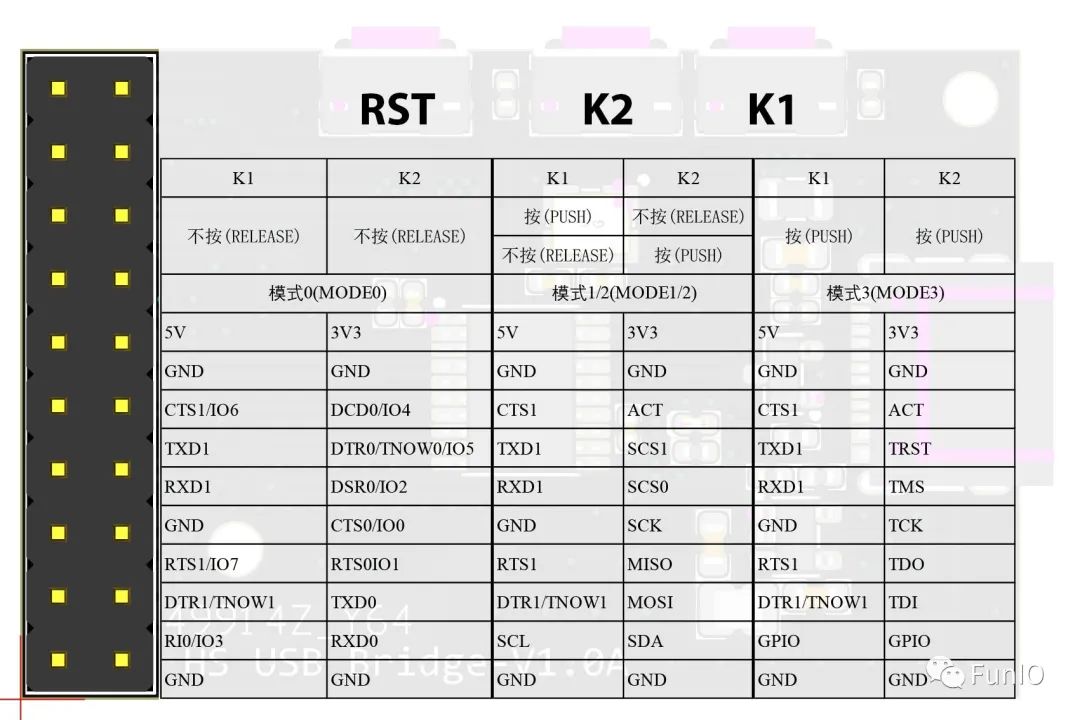
Shell
Debug Records
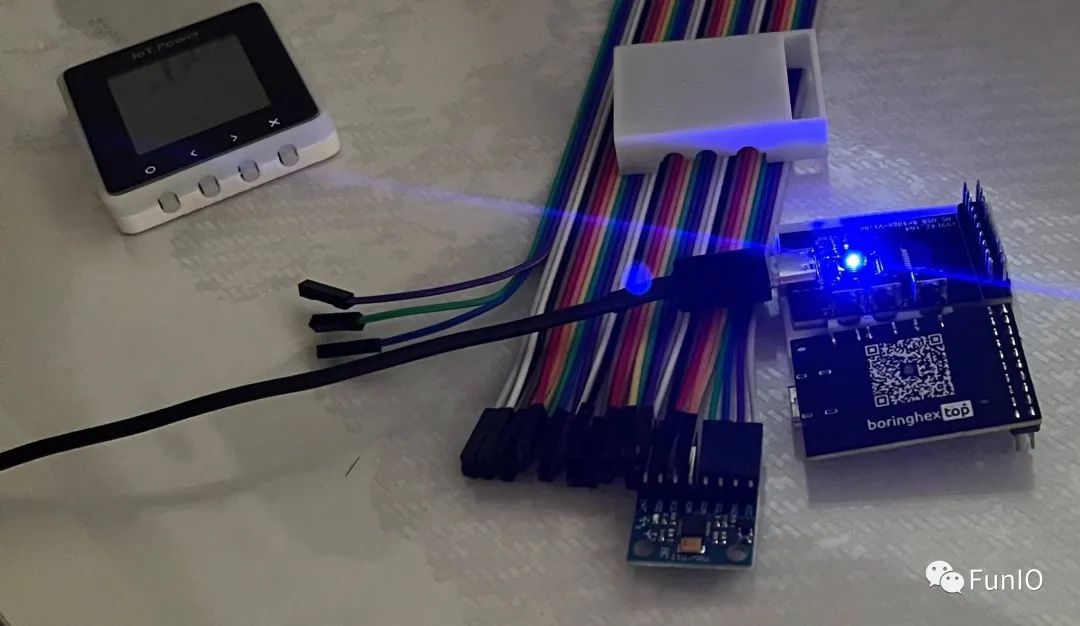
-
CH347 Dynamic Library Encapsulation Example
Related Projects
-
[WIP]CH347 Chip Python Library[3]
Future work will continue to improve the Python software library and enrich its functionalities.
Currently, I have a few samples available, feel free to contact me if you need any.
References
GitHub Repository: https://github.com/pengwon/ch347-hs-usb-bridge
[2]CH347: https://www.wch.cn/products/CH347.html
[3][WIP] CH347 Chip Python Library: https://github.com/pengwon/pych347